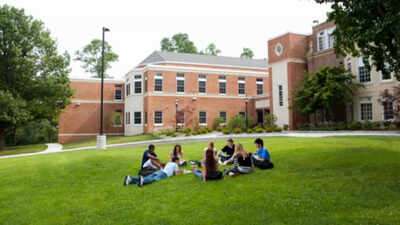Explained: Why America’s universities are saying ‘no’ the $100,000 H-1B visa fee

The battleground for America’s scientific edge has shifted—not to a laboratory or a global summit, but to a federal courtroom in Washington, D.C. On October 24, 2025, the Association of American Universities (AAU) joined forces with the U.S. Chamber of Commerce to sue the Trump administration over a new policy: a $100,000 entry fee on each new H-1B visa petition.The lawsuit does not use dramatic language. It does not need to. It argues, plainly, that the fee could cripple research, shrink classrooms, squeeze medical care, and help global competitors outperform the United States in the coming decade.In other words: this is not about immigration paperwork. This is about who will shape the future of science, technology, medicine, and innovation.
The policy that sparked the lawsuit
H-1B visas are the route through which U.S. universities and businesses hire highly skilled international experts—especially in STEM, business, and advanced research.But this new $100,000 fee is layered on top of already high legal and filing costs. For universities, the impact is immediate because they do not apply in one spring hiring window (as tech firms do). They hire continuously—faculty, postdocs, medical researchers, lab staff, instructional specialists.So the fee operates like a meter that never stops running.In the AAU’s words, the policy does not create self-reliance. It amputates capacity.
What America’s universities are warning
AAU President Barbara R. Snyder has laid out the stakes with unusual clarity. She emphasises that the U.S., despite its world-leading research infrastructure, does not produce enough highly skilled workers domestically to meet the needs of its innovation economy. “American businesses and institutions of higher education alike utilize the H-1B program because the domestic supply of highly skilled workers is not large enough to keep up with the demands of U.S. innovation,” she said in AAU’s official press release.And that deficit cannot be bridged overnight. These are not roles that can be filled by simply ‘hiring local’. They require:
- Deep disciplinary training
- Research specialisation
- Years of post-doctoral work
As Snyder stresses,“H-1B positions require highly specialized, often technical, skills and knowledge and as a result are extremely hard to fill.”And then she delivers the core warning: cutting off this talent stream hurts Americans too. “The harm will also fall upon American workers, as university H-1B employees help spur innovation that generates job opportunities for U.S. workers,” Snyder adds.In short: If research stalls, jobs do not grow. They evaporate.
Who actually holds H-1B visas on campus
This is not an abstract fear. The numbers show how deeply H-1B scholars are woven into the American academic workforce.Data from College and University Professional Association for Human Resources (CUPA-HR) shows:
That translates to about 40,600 faculty across U.S. universities. Crucially, over 70% of these faculty are tenured or tenure-track—proof that international scholars are not temporary substitutions; they are the continuity of pedagogy and research.In research-heavy disciplines, the dependence is sharper, suggest estimates from National Center for Science and Engineering Statistics and CUPA-HR:
- Nearly 1 in 10 non-tenure research faculty are on H-1B visas.
- Engineering and business departments each have over 10% of faculty working on H-1B status.
- An estimated 11,000 postdoctoral researchers nationwide depend on the H-1B category.
This is the workforce that writes the journal papers, builds the prototypes, runs the machines, supervises the PhD candidates, keeps the laboratories alive.Cut them out, and labs fall silent.
Why the fee threatens more than payrolls
The universities’ argument is straightforward: Talent is mobility. Innovation is mobile. Leadership is mobile.If the US becomes expensive, unpredictable, or institutionally hostile to global scholars, they will go elsewhere. And the world is waiting:
- Canada has eased post-study work and residency rules for STEM PhDs.
- Germany is funding research immigration pathways as a national competitiveness strategy.
- Australia and the UK are recruiting international postdocs directly.
To lose talent is not simply to lose people. It is to lose:
- Future patents
- Future medical breakthroughs
- Future classroom expertise
- Future Nobel committees
- Future companies
In global science, advantage is cumulative. Whoever leads today shapes who leads tomorrow.
The India angle
India is the largest source of H-1B talent, especially in STEM and research. A large share of America’s postdoctoral pipeline—especially in AI, biotech, and chemical engineering—is Indian.If the US erects cost barriers, the migration will be not from India to the U.S., but from India to Canada, the U.K., or Germany.This is brain drain reversed—and universities know it.






